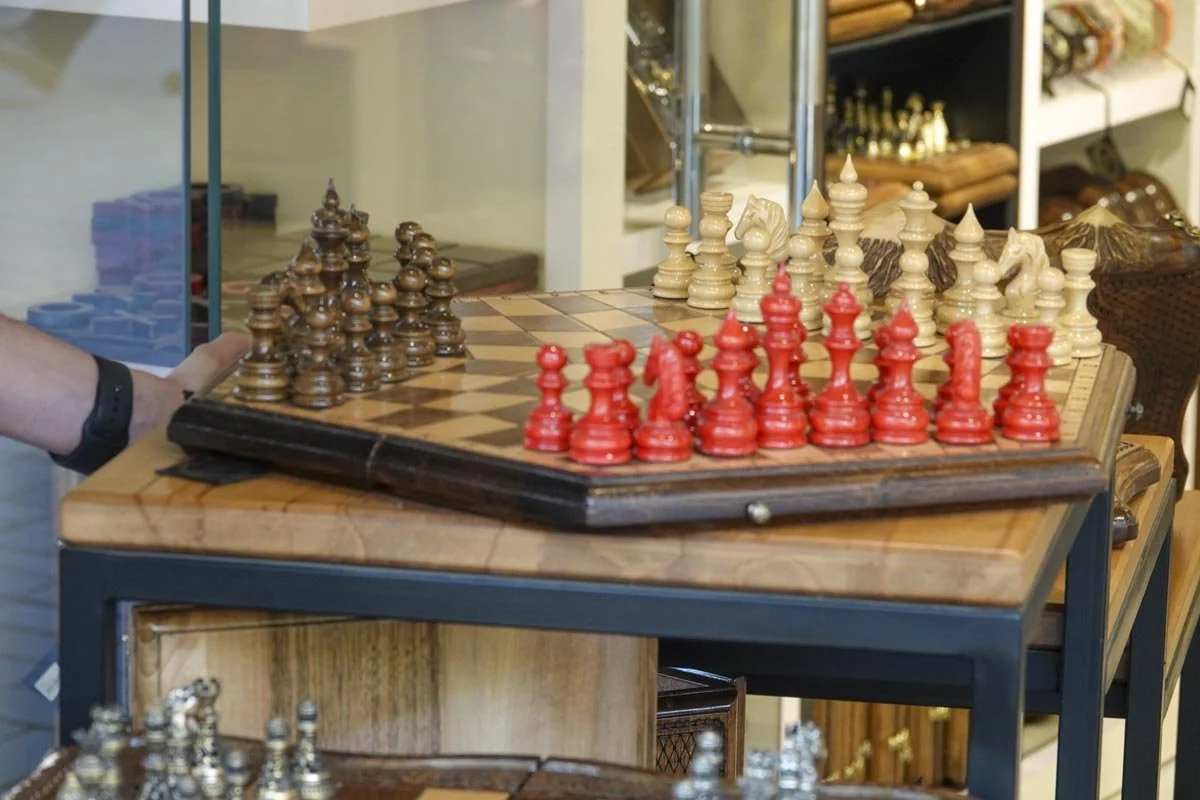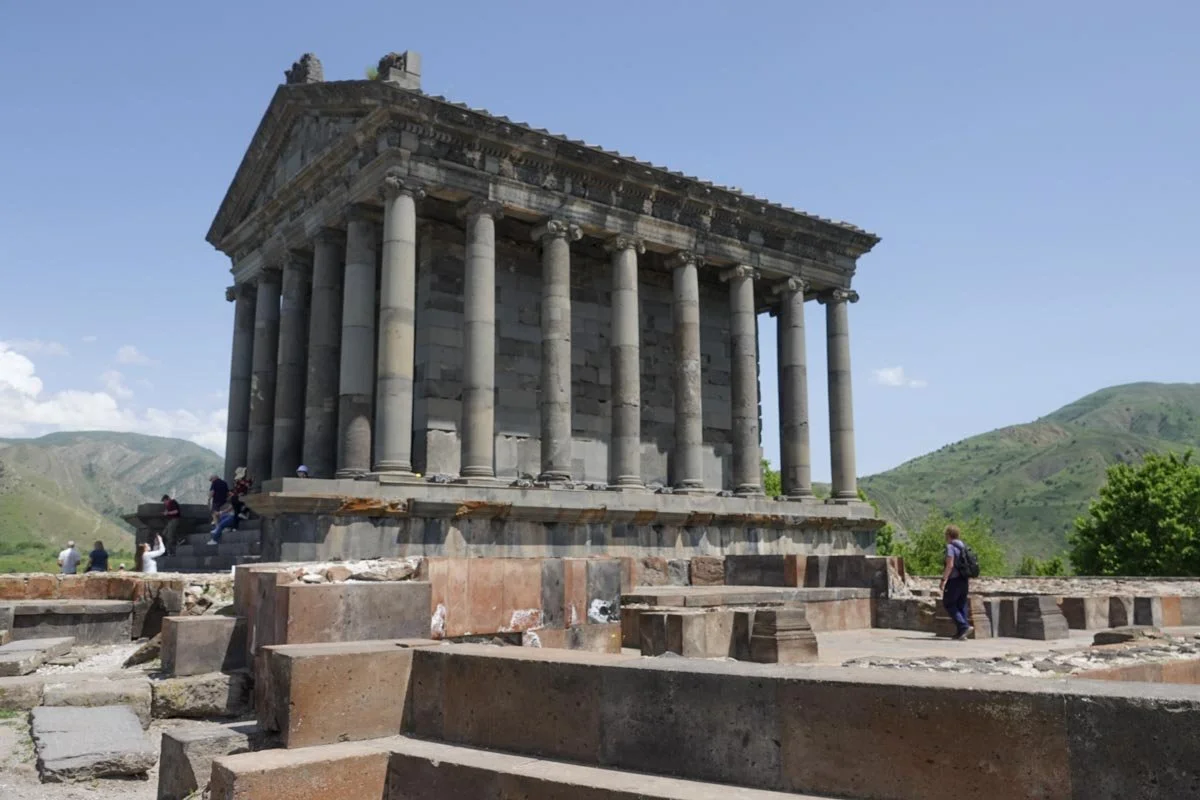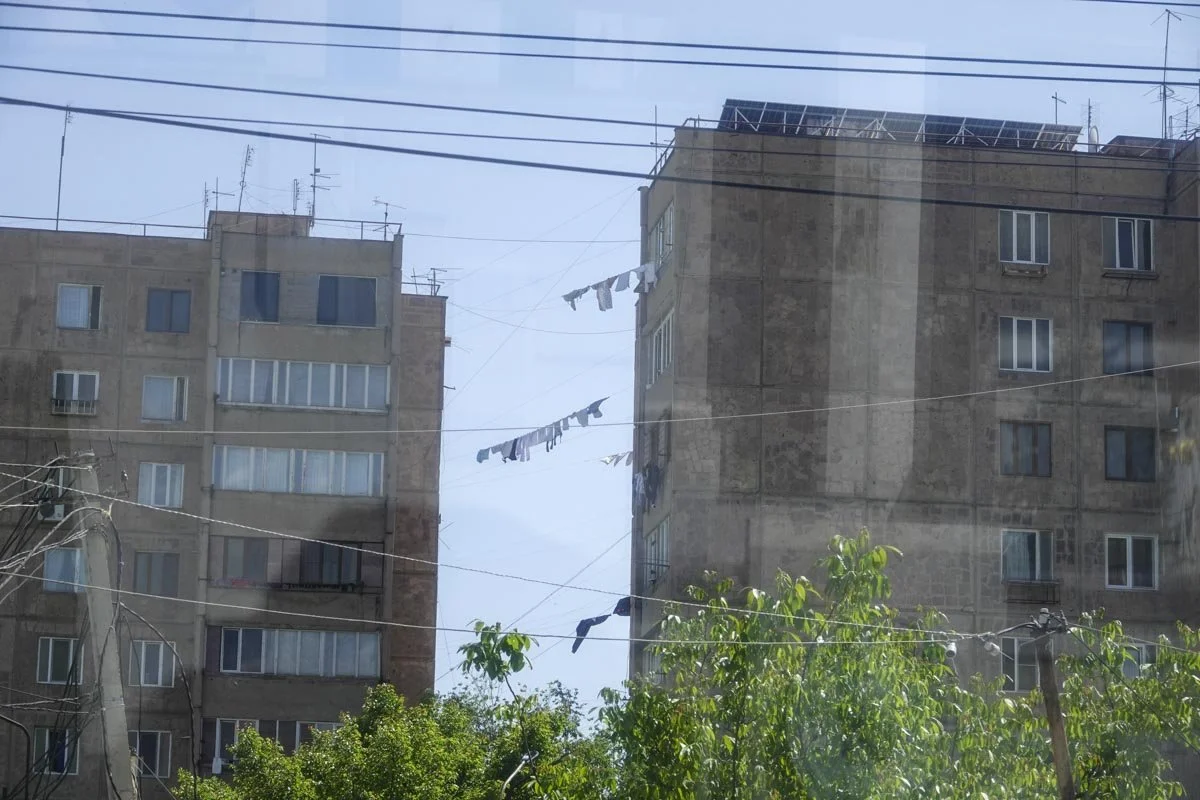Odds and Ends
This post will just be some Armenian odds and ends. We saw more than I could put into posts for Armenia. The first photo is the Matenadaran, in Yerevan. It's a museum, a repository of manuscripts, and a research institute. It holds the world's largest repository of Armenian manuscripts. It was named after Mesrop Mashtots, the inventor of the Armenian alphabet and a statue of him stands in front of the building.
We got a tour of the museum which was interesting. For me, it was too much information - and they had lots of information.
Armenians are big chess players. Our Armenian guide said that it's common to have at least one Armenian amongst the world's leading chess players. It was common to see vendor after vendor at markets selling chess sets, like below.
How big are the Armenians at chess? I never even knew there was such a thing as three-way chess which lets you play two players at once.
We visited the Temple of Garni which gave us a curious look at how hands have changed here over the centuries. It's been described as the easternmost building of the Greco-Roman empire. It was also the only Hellenistic building largely preserved by the USSR. It's perched on a cliff overlooking the Azat River.
It was initially a pagan temple built by King Tiridates I in the first century AD as a temple to the sun god. Of course, there are other explanations about it as well. It collapsed in a 1679 earthquake, but many fragments remained in place. It was reconstructed in 1969-1975 and is an important tourist attraction in Armenia and a central shrine of Armenian neopaganism. It also had other building remains including a large bathhouse.
It's not unusual on our visits to see people hanging laundry from their balcony or windows. That's common. But I had never seen people stringing up a clothesline between separate buildings before I saw it on the outskirts of Yerevan. I was impressed.
Someone, like me, might think that it would be hard to read signs in countries with their own alphabets and languages, like Armenia and Georgia. But despite that, it was not uncommon to be able to read signs.
Being on the border of East and West (Asia and Europe), I expected to be mostly drinking tea. I was wrong. The Caucasus folks are moving towards coffee like bees to flowers. Coffee places were everywhere, even without people.
On another note, it doesn't take much to be in business in Yerevan either (but I don't know how you drive it).








